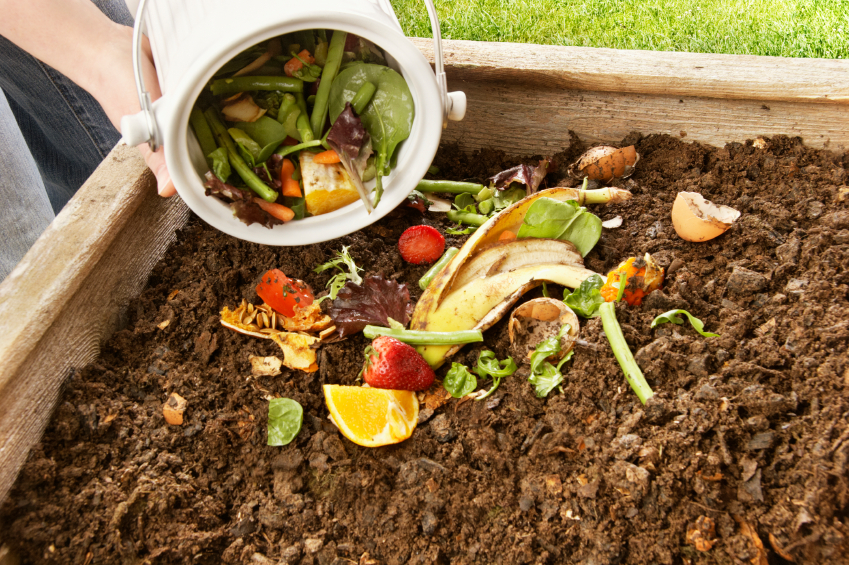Green waste, often referred to as organic waste or garden waste, is made up of biodegradable elements left over from different landscaping and gardening projects. It is often composed of grass, shrubs, twigs, tiny branches, and leaves. The waste is biodegradable which means that it can be broken down by natural processes.
Here are the characteristics of green waste and some sustainable recycling options:
Characteristics of Green Waste:
Biodegradability Green waste is highly biodegradable. Green waste can gradually decompose with the help of microorganisms. One of the primary characteristics of green waste is that it decomposes easily, which makes it an excellent material for a variety of eco-friendly processes and composting. Green waste breaks down into organic matter, which releases vital nutrients like potassium, phosphate, and nitrogen into the soil and enriches it.
Composting is one of the most common ways to harness the biodegradability of green waste. Biodegradation of green waste is a sustainable and eco-friendly way to manage organic materials while reducing the burden on landfills and minimizing the release of harmful greenhouse gases.
Organic Matter The main component of green waste is organic matter, which consists of components that were previously living and are biodegradable. It will naturally decompose into compost or dirt that is rich in nutrients over time with the aid of microbes. Typical organic matter in green waste includes:
- Fallen leaves from trees and shrubs are a common component of green waste.
- Grass clippings and the leftovers from lawn care are good sources of organic carbon and nitrogen since they are high in organic matter.
- As plants, bushes, and shrubs are organic and can break down over time, clippings from these types of plants are frequently included in green trash.
Moisture Content It can differ according to several factors, including the components in the trash, the climate, and the waste management practices. Because it is organic, green garbage usually contains more moisture than other forms of waste. There are situations when the moisture content might be as high as 80% or even higher. Season, Weather Conditions, Type of Material, Storage and Collection are some factors that influence the moisture content of green waste.
Odour: Decomposing Green waste can release several odours, some of which might be disagreeable. Organic matter may release odours in the early phases while it is actively degrading. These smells may be somewhat unpleasant or musty. In the absence of oxygen (anaerobic conditions), it is more likely to produce foul-smelling odours, such as a rotten or putrid smell.
Pest attraction: If Green waste is not appropriately handled it offers pests food, housing, and breeding possibilities, and they are typically drawn to it. Insects, Rats, and Termites are drawn to green waste.
Bulkiness: Green waste can be quite bulky due to the nature of the materials it comprises, which are often large and irregular in shape. Trimmed branches and twigs can be long and unwieldy, taking up a requiring plenty of space. During the autumn season accumulated Fallen leaves take more space.
These characteristics are important to consider when dealing with green waste, whether you’re composting, recycling, or disposing of it in an environmentally responsible manner.
Sustainable Recycling Options for Green Waste:
Composting: One of the best and most environmentally friendly methods of recycling green waste is composting. It entails the breakdown of organic waste into nutrient-rich compost from things like leaves, grass clippings, kitchen leftovers and yard garbage. Composting is an easy and efficient technique to recycle organic waste, improve soil quality, and support sustainable environmental practices. Composting may be done on a variety of scales.
Organic Mulch: Natural materials that break down naturally are used to make organic mulch. Wood chips, bark, straw, compost, leaves, and grass clippings are some examples. organic mulch breaks down and enriches the soil with nutrients, it offers several advantages. It is the best way to cover soil to retain moisture, suppress weed growth, and regulate soil temperature. It can also be used for landscaping and erosion control.
Biofuel Production: The process of turning biological materials also known as biomass into fuels that may be utilized to produce energy is known as biofuel production. These fuels are thought to provide a more sustainable and eco-friendly substitute for conventional fossil fuels. Biofuels can be used for various purposes, including transportation, electricity generation, and heating.
Green Garbage Collection Programmes: A lot of towns have set up curb-side programmes for gathering green garbage, which is subsequently sent to composting facilities. This encourages residents to separate green waste from other trash, reducing the environmental impact.
Land Applications, Green Roofs and Urban Landscaping, and Community School Gardens are the Sustainable Recycling Options for Green Waste.
Green waste recycling solutions that are sustainable minimize the amount of garbage that ends up in landfills, improve soil quality, and support a circular economy. These methods enable more environmentally friendly waste management systems, assist cut down on greenhouse gas emissions, and save resources.
- About the Author
- Latest Posts
A passionate advocate for all natural and sustainable ideas. With a background in sustainable economics science and a deep love for nature, Sojy has dedicated his career to promoting eco-friendly practices and encouraging others to live a more sustainable lifestyle. He is an avid hiker, gardener, and cook, and loves experimenting with natural ingredients in his recipes and lifestyle routines. Sojy believes that small changes can make a big impact and is constantly seeking out new ways to reduce his carbon footprint and inspire others to do the same




